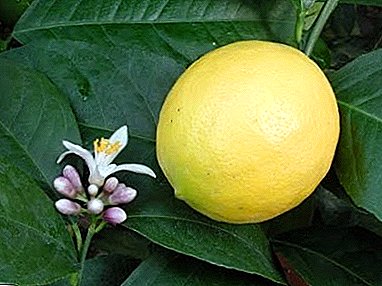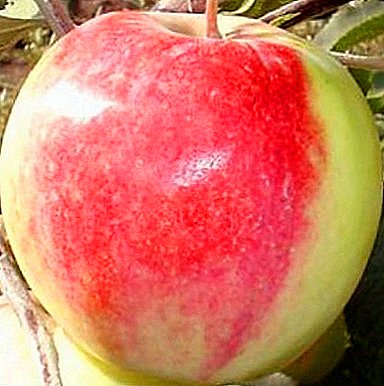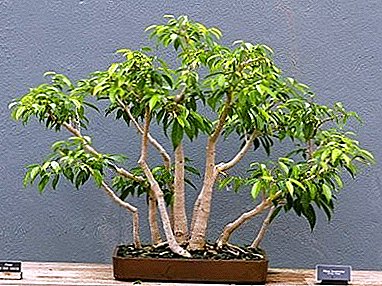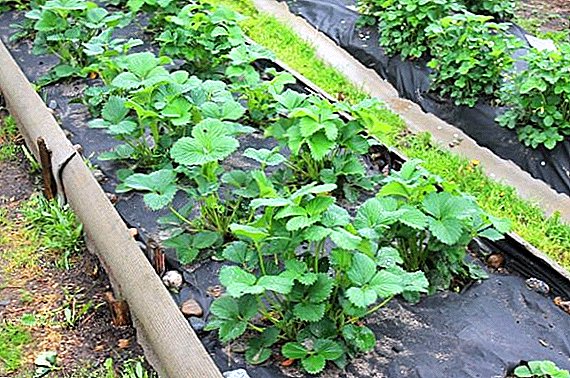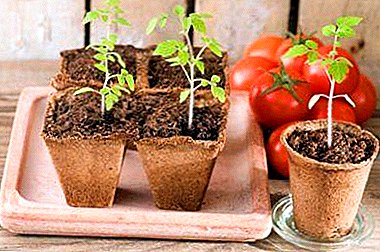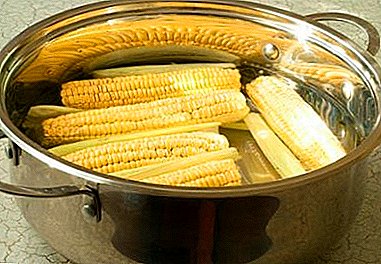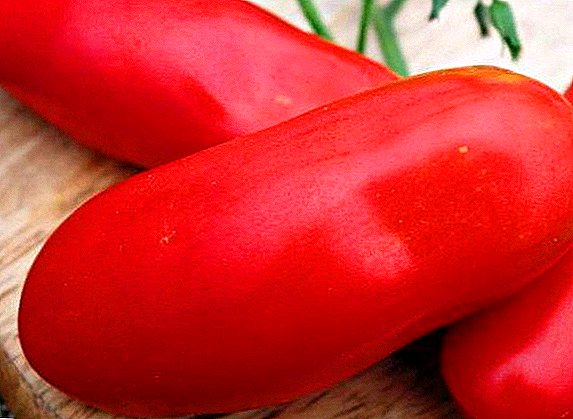 Tomatoes "Casanova" belong to mid-season, high-yielding varieties of tomatoes. A distinctive feature of this variety is an elongated fruit shape that is unusual for a tomato. Further in the article we will consider a detailed description of the variety and a description of the fruits, the rules of agricultural engineering and harvesting, as well as the reasons why the tomato "Casanova" was so fond of gardeners, and how to get the maximum yield from the site.
Tomatoes "Casanova" belong to mid-season, high-yielding varieties of tomatoes. A distinctive feature of this variety is an elongated fruit shape that is unusual for a tomato. Further in the article we will consider a detailed description of the variety and a description of the fruits, the rules of agricultural engineering and harvesting, as well as the reasons why the tomato "Casanova" was so fond of gardeners, and how to get the maximum yield from the site.
Appearance and description of the variety
The bush is very tall can reach 2 m in height, medium-leaf. For the formation of a sufficient number of stems it is necessary to conduct a pinching. This procedure will provide an opportunity to get a harvest much earlier, as well as increase the terms of fruiting. The formation of 1-2 stems is considered optimal. On one brush grows on average 4-5 fruits.
When choosing a tomato variety, it is necessary to take into account the period of ripeness of the fruit, the height of the bush and of course the taste characteristics. Learn more about such varieties of tomatoes as the "King of the Early", "Star of Siberia", "Rio Grande", "Honey Spas", "Shuttle", "Sugar Bison", "Gigolo", "Rapunzel".
Fruit Characteristic
The fruits of this variety of tomatoes stand out among other varieties of tomatoes: large, have a bizarre oblong shape with a forked bottom, with a dense and smooth skin, fleshy and sweet. Fully ripened fruits of rich red color with pronounced taste. The average weight of a tomato is 150-200 g, length - about 20 cm.

The advantages and disadvantages of the variety
Gardeners appreciate this variety for good keeping quality and transportability. Fruits do not crack and do not burst when saved; they also retain their integral form in a canned form. Tomatoes of this type are also good in fresh, unprepared form.
Another advantage of tomato "Casanova" is a high yield - from 1 square. m can collect up to 12 kg of tomatoes per season, subject to proper planting and care.
Significant deficiencies are not noted. However, culture is very thermophilic, requires planting in a protected ground, so tomatoes of this variety are grown mainly in greenhouses.
Did you know? Until recently, there was a lot of controversy and debate about the botanical origin of tomatoes in vegetables, fruits, or berries. Many consider tomato as a vegetable, as the fruits are eaten raw and not used to make desserts. According to the laws of botany - this is a berry. But the European Union ranked tomato as fruit in 2001.

Features agrotehnika
Tomatoes in general and the variety "Casanova", in particular, are a rather demanding crop. To get a big and tasty crop, you need to follow certain rules during the preparation of seedlings, as well as the care of the bushes during fruit ripening.
In the northern regions, as well as on the territory of the middle belt, “Casanova” tomatoes should be grown in greenhouses, that is, in greenhouses and greenhouses. This will give the opportunity to receive a crop up to the first frost or even all year round.
Preparation and planting seedlings
Seedlings need to prepare an average of 50-60 days before the proposed planting in open ground. For sowing seedlings will need to select the highest quality and healthy seeds. Before they need to soak: Put seeds on a damp napkin or cloth and leave for a day, after which you can start planting.

If the seeds germinate on the fabric, the landing should occur in a well-moistened soil. However, if you use fresh seeds, you can skip this procedure.
Also needed take care of the soil in advance: For seedlings of tomatoes, a mixture of humus and sod soil in a ratio of 1: 1 is perfect. Peat, sawdust, coconut substrate can be added to the soil.
Planting seeds for seedlings can begin in the middle of March. For disembarking, you need to prepare boxes or other containers with a minimum depth of 10 cm, seeds are planted to a depth of about 1 cm, after which the box is covered with glass, film or transparent plastic.
For the successful cultivation of seedlings should adhere to the following rules:
- The temperature of the room should be within + 23-25 ° C during seed germination. When the seeds have germinated and the stems have grown stronger, the temperature can be reduced to + 16-20 ° C.
- Tomatoes "Casanova", like other tomatoes, need enough light; in the first few days after germination of seedlings, it is necessary to provide round-the-clock coverage.
- It is necessary to eliminate any drafts in the room.
- Tomatoes do not need frequent watering, it should be done every 5-7 days. However, if the soil is very dry, it is possible more often. Water for irrigation is heated to room temperature.
After the seeds germinate and the first leaves appear on the stalks, a pick should be made. For this most often used plastic cups of 0.5 liters. If you choose a smaller volume, the seedlings will have to be replanted again when they grow up.
Important! Tomatoes "Casanova" it is better to dive in two or more stalks in order to make the bush more robust, and also to increase the yield.
Transplantation in open ground
When the seedlings are ready, you can proceed to its planting in open ground. The readiness of the seedlings can be determined by their characteristic appearance:
- The height of each seedling is about 30 cm, the stalks are thick and strong, with 5-7 leaves each.
- The seedling has at least 1-2 flower brushes.
- Internodes shortened.
If the stems are strong and dense, they can be planted at an angle of 90 °, but if the stems are weak, they must be planted at an angle of 45 °. After immersing the seedling in the hole, it is instilled, slightly compacted and watered.
Care and watering
It is very important to provide the tomatoes with enough moisture at the time of the formation of the fruit - if the water during this period is not enough, the fruit may turn out very shallow or crumble. After each watering the soil must be loosened.
Important! Due to the high growth of the stems with growing tomatoes must be built supports for each bush.

For the normal formation and ripening of the fruit, the bushes must be fed. As fertilizers can be used as organic substances (ash, chicken manure or shells), and mineral fertilizers. In order to stimulate flowering of the bushes, it is possible to spray the solution of boric acid in the proportion of 1 g per 5 liters of water 3-4 times.
In order to get large, beautiful fruits, you should conduct pasynkovanie in time - removal of young shoots (several centimeters in length), which sprout in the leaf axils.
To tie up tomatoes, they use pegs, tapestries and special cages for vegetables.
Pest and disease control
Tomatoes are quite vulnerable to diseases and pests, and therefore need to be protected during the entire period of growth and ripening: from planting seeds to collecting the last fruits. 
Consider the most common diseases, as well as methods of plant treatment:
- Late blight. The second name of the disease is brown rot. Manifested by brown and gray spots on all parts of plants. For the fight, you can use garlic tincture, preparations "Barrier", "Barrier", "Oxy".
- Vertex Rot. Manifests itself moist spots of dark green color on unripe tomatoes. To eliminate the disease, it is necessary to provide the plant with calcium, for this purpose it is possible to feed with chalk or lime.
- Brown spotting, or kladosporioz. Also manifested by the presence of velvet spots on the inner side of the leaves in the lower part of the plant. The disease can quickly destroy the bush. To fight should use drugs "oxy", "Home".
- Fomoz. Characterized by the presence of stains of rot, which quickly spread throughout the plant. It occurs due to excess moisture and fertilizing. For treatment use drugs from the previous paragraph.
- Fusarium wilt. Symptoms of the disease are wilting of the leaves, which extends to the entire branch. To combat used drugs "Barrier" and "Hom."
- Dry blotch, or Alternaria. The main symptom: brown spots that affect all parts of the plant. To combat the disease, the bushes are sprayed with the following drugs: Antracol, Tattu, Consento.

In addition to infectious diseases, plants can suffer from pest attacks. How to deal with insects, consider below:
- White fly. Due to the attack of this insect, the leaves on the bushes turn yellow and fade, become covered with fungi, and then turn black. To save the plant from the insect, apply "Confidor".
- Slugs. Eat the leafy part of the plant. In order not to let the pest to the bushes, the soil near the root should be sprayed with hydrated lime, loosen and sprinkle with crushed bitter pepper.
- Spider mite. It depletes the leaves of the plant, sucking the juice from them, which leads to yellowing and complete drying. To get rid of the insect, use the drug "Malathion".
- Medvedka. Insect breaks through the soil near the bushes, eats the root. To combat the medvedka you can use the drug "Thunder" or a solution of vinegar.
- Wireworm. Just like the bear, damages the root system and the ground part of the bush. For the treatment of plants used drug "Basudin".
- Aphid. Able to destroy large areas of tomatoes, if you do not take measures to combat. To get rid of the aphids, you can use the soap chips dissolved in water, sprinkle the bushes with wood ashes or sprinkle with garlic and onion peel.
 To avoid pest attacks and infections, you should prepare the soil, seeds and seedlings well. This will make it possible not to use chemical drugs, but to grow organic vegetables.
To avoid pest attacks and infections, you should prepare the soil, seeds and seedlings well. This will make it possible not to use chemical drugs, but to grow organic vegetables.
When to harvest
It is very important not to miss the right moment of harvest - if you start collecting fruits too late, they can overripe, which will adversely affect the overall yield of the bushes. However, do not pick tomatoes variety "Casanova" too early. Optimally plucking brown, almost ripe tomatoes from the bushesthat have reached the right size.
Fruits should be folded onto the wooden boxes in 2-3 layers, perelachivaya each layer of straw. An important condition for ripening is the temperature: it should be in the range of 20-25 ° C and humidity not more than 85%. The room should be well ventilated (but without drafts) and lit up, this will speed up the ripening process and make the fruit sweeter.
Tomato harvesting should be carried out every few days during the entire ripening period. Tomatoes "Casanova" can be collected up to the first frosts, however, you should make sure that the last fruits were collected before the mark on the thermometer drops below 10 ° C at night - in this case, the collected fruits can rot during storage.
Did you know? Today, there are more than 10,000 different varieties of tomatoes. In addition to taste and shape, they differ in color and size - from a few grams to 1.5 kilograms; they can be pink, red, yellow and black.

So, we reviewed a detailed description of the bush and fruits of tomatoes "Casanova", the main nuances of planting and cultivation, the rules of care and harvest, as well as measures to combat disease. If you follow these rules, sweet and juicy fruits will delight you from July to the first snow!


